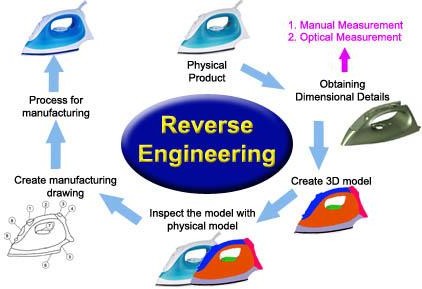[How To Reverse Engineer A Product]

Executive Summary

Reverse engineering a product involves deconstructing it to learn how it works, how it was made, and what makes it unique. By doing this, you can gain valuable insights into the product’s design, functionality, and even its potential weaknesses.

This article provides a comprehensive guide to reverse engineering a product, explaining the process, benefits, and challenges involved. Follow these steps to effectively reverse engineer a product and unlock valuable knowledge for your own projects.
Introduction
In today’s competitive market, businesses are constantly looking for ways to innovate and gain an edge over their competitors. One effective way to achieve this is through reverse engineering, which allows you to analyze existing products and learn from their design and functionality.
FAQs
-
What is the purpose of reverse engineering?
Reverse engineering helps you understand how a product works, how it was made, and what makes it unique. It allows you to identify potential areas for improvement, learn from the competition, and create better products or solutions. -
Can you reverse engineer software?
Yes, you can reverse engineer software to understand its functionality, identify potential security vulnerabilities, or create compatible products. -
Is reverse engineering illegal?
Reverse engineering is legal in most countries, but there are certain restrictions and limitations. It is important to ensure that you are not violating any patents or copyrights.
Five Key Subtopics
Teardown and Analysis
The first step in reverse engineering is to teardown the product and analyze its components. This involves disassembling the product to identify the individual parts, materials, and assembly methods.
- Document the process: Take detailed notes and photographs of the disassembly process to accurately document the product’s construction.
- Identify key components: Determine the critical components that contribute to the product’s functionality and overall design.
- Analyze materials and manufacturing methods: Examine the materials used in the construction of each component, as well as the manufacturing processes employed.
- Test and evaluate: Conduct tests and evaluations to assess the performance and durability of the product’s components.
Functional Analysis
Once you have analyzed the physical components of the product, you need to understand how it functions. This involves examining the product’s operating principles, user interactions, and overall system architecture.
- Create a functional block diagram: Map out the product’s major functional blocks and their interconnections to understand the overall system architecture.
- Describe the operating principles: Document the physical and logical principles behind the product’s operation and how its various components interact.
- Identify user interactions: Analyze the product’s user interface, input devices, and output interfaces to understand how users interact with the product.
- Study the software and firmware: Examine the software and firmware used in the product to identify its functionality, logic, and potential vulnerabilities.
Competitive Analysis
Conduct a thorough analysis of the product’s competitors to gain insights into their strengths, weaknesses, and market positioning. This will help you identify potential areas for differentiation and improvement in your own product.
- Identify competitors: Determine the key competitors in the market and gather information about their products and market share.
- Compare features and functionality: Analyze the features and functions of your product in comparison to those of its competitors, identifying areas of overlap and differentiation.
- Study pricing and market positioning: Examine the pricing strategies and market positioning of your product and its competitors to understand their value proposition and target customers.
- Identify potential gaps: Determine areas where your product can be differentiated or improved based on the analysis of your competitors’ strengths and weaknesses.
Cost Analysis
Estimate the cost of manufacturing and distributing the product to assess its profitability and competitiveness. This involves researching materials, manufacturing processes, and distribution channels.
- Identify materials and manufacturing costs: Calculate the costs associated with the materials used in the product and the manufacturing processes employed.
- Estimate assembly and labor costs: Determine the costs of assembling the product and the labor involved in the manufacturing process.
- Research distribution channels and costs: Explore different distribution channels and estimate the costs associated with transporting and delivering the product to customers.
Risk Assessment
Identify potential risks and challenges associated with reverse engineering the product. This includes ethical, legal, and technical considerations.
- Legal and ethical implications: Ensure that you have the necessary permissions and licenses to reverse engineer the product, and that you are not violating any patents or copyrights.
- Technical challenges: Assess the technical challenges involved in reverse engineering the product, such as the availability of documentation and the complexity of the product’s design.
- Resource constraints: Consider the resources required for reverse engineering the product, including time, personnel, and equipment.
- Potential backlash: Be aware of the potential backlash from competitors or other stakeholders who may be concerned about the unauthorized use of their intellectual property.
Conclusion
Reverse engineering a product can be a valuable tool for businesses looking to innovate and gain a competitive edge. By following the steps outlined in this article, you can effectively reverse engineer a product to uncover its design principles, functionality, and potential weaknesses. The insights gained from reverse engineering can be used to improve existing products, create new and innovative solutions, and make informed decisions about market positioning and product development.
Relevant Keyword Tags
- Reverse Engineering
- Product Analysis
- Competitive Intelligence
- Cost Analysis
- Risk Assessment
